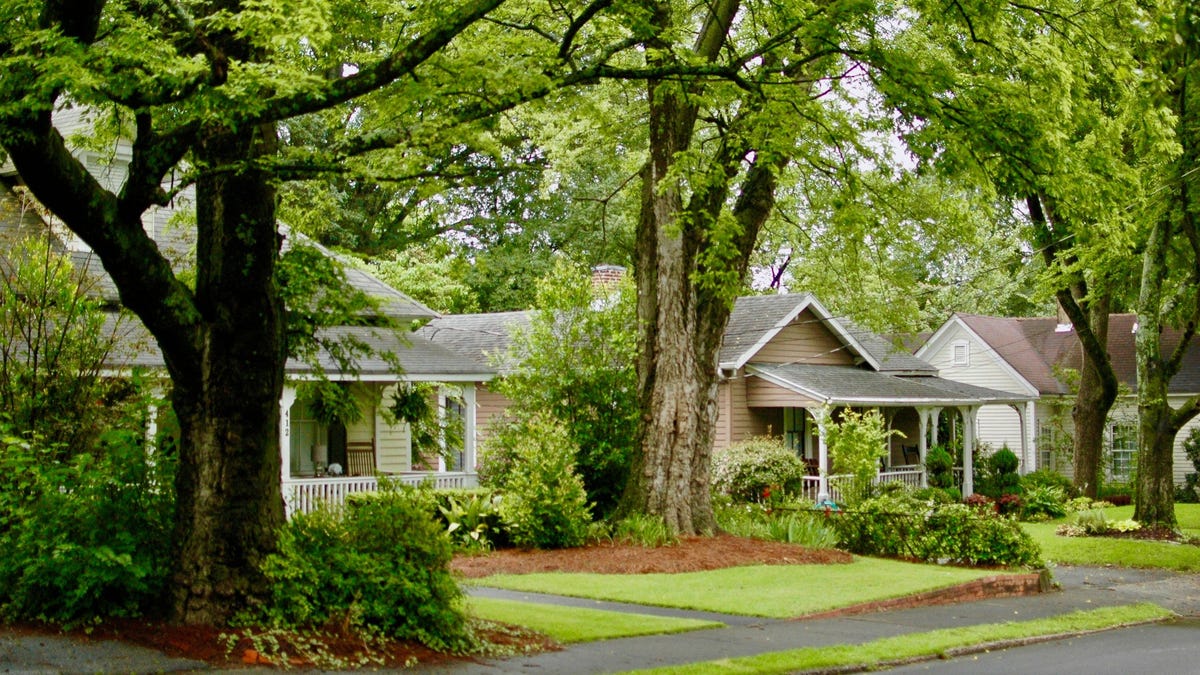Consider These Tree Maintenance Costs Before Buying a New House
When you’re on the hunt for the perfect house (or at least one that’s available in your price range), there are plenty of things to consider, from the walkability of the neighborhood, to the school district, to the condition...


Photo: Kai Moon (Shutterstock)
When you’re on the hunt for the perfect house (or at least one that’s available in your price range), there are plenty of things to consider, from the walkability of the neighborhood, to the school district, to the condition of the house itself.
In most cases, the condition of the front and backyards aren’t necessarily a dealbreaker—as long as the outdoor space is there. But one thing many homebuyers overlook is the trees surrounding the house.
Of course they’ll notice them—especially if they partially shade the house, or add to its curb appeal—but beyond seeing them as an asset, people often neglect to consider the costs of maintaining the trees on their property. Here’s what to keep in mind about this frequently forgotten aspect of homeownership.
How to assess the trees on the property
While there are definitely benefits of having trees in your yard, when you’re caught up in the process of buying a home, it can be easy to gloss over the fact that trees are living things that will continue to grow and change over time. And that means that you can’t just leave them and hope for the best (well, technically you can, but that’s a gamble).
When visiting potential homes, here are a few things to consider about the trees in the yard:
Size/Age: How tall and thick is the tree? What’s the branch situation like? Does it have room to grow (if needed)?Location: How close is the tree to the house? If there was a storm or strong winds, is it possible that the tree could potentially fall on any part of the house? What about the branches? Will its falling leaves clog the gutters? Do the roots look like they could disrupt the foundation of the house?Health: Does the tree look diseased? Is it starting to rot? Are you able to see any insect infestations?Type of tree: Does it produce acorns or crabapples that will fall into your yard or onto your house? Will it drip sap onto any cars parked under it?If the trees in the yard look generally healthy and are located in places where they don’t pose a threat to the house, maintenance costs over the years should be manageable—mainly, pruning branches as needed. Depending on the size of the trees, this would either involve investing in the equipment to take care of the pruning yourself, or hire professionals to get the job done.
Having to pay professionals to cut down a tree, however, tends to be pretty costly, and something to avoid paying for, if possible. (More on that in a bit.)
To get a better idea of the types of tree-related issues that may arise, read this firsthand account of a new homeowner’s experience with the trees in her yard.
What to do if you’re interested in the house
Let’s say you fall in love with a home, but have some concerns about trees on the property. What next?
One option is bringing an arborist in as part of the home inspection. If they confirm that one or more trees should come down, you can negotiate the costs of their removal with the owner as part of the closing process.
Or, if the tree in question happens to pose a hazard to any power lines, check with the city and/or local energy provider to see if the home is eligible for their tree maintenance service. Rules vary depending on the location of the house. Plus, it only applies to trees with branches in the way of power lines—any others on the property are your responsibility.

 AbJimroe
AbJimroe 































